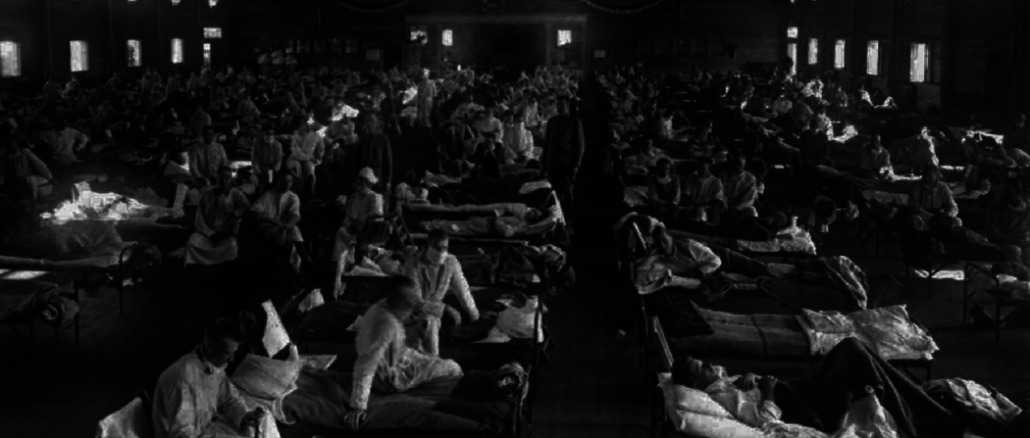
As the end of WW1 drew close a much deadlier scourge was beginning to sweep across the world – the Spanish flu pandemic, the deadliest in history.
By the time it petered out in 1919 the pandemic infected an estimated 500 million people worldwide—about one-third of the planet’s population—and killed an estimated 20 million to 50 million victims although some reports say the death toll could have been as high as 100 million.
It began to appear in Australia in early 1919 and about 40 percent of the population fell ill and around 15,000 died as the virus spread.
The flu was first observed in Europe, the United States (the first American to die was in March 1918 at an American Army base) and parts of Asia before swiftly spreading around the world.
At the time, there were no effective drugs or vaccines to treat this killer flu strain. Citizens were ordered to wear masks, schools, theatres and businesses were shut and bodies piled up in makeshift morgues before the virus ended its deadly global march.
It was nicknamed ‘Spanish flu’ as the first reported cases were in Spain. As this was during WW1, newspapers were censored (Germany, the United States, Britain and France all had media blackouts on news that might lower morale) so although there were flu cases elsewhere, it was the Spanish cases that hit the headlines.
The outbreak hit the UK in a series of waves, with its peak at the end of WW1. Young adults between 20 and 30 years old were particularly affected and the disease struck and progressed quickly in these cases.
Onset was devastatingly quick. Those fine and healthy at breakfast could be dead by tea-time.
In the U.S., about 28% of the population became infected, and 500,000 to 675,000 died.
When you look back on history you are faced with the benefits of living in the 21st Century. We still can get the flu, but we have the option of having a flu vaccine each year. Then again, have we ever seen a flu like the original Spanish Flu.
SheSociety is a site for the women of Australia to share our stories, our experiences, shared learnings and opportunities to connect.

Leave a Reply